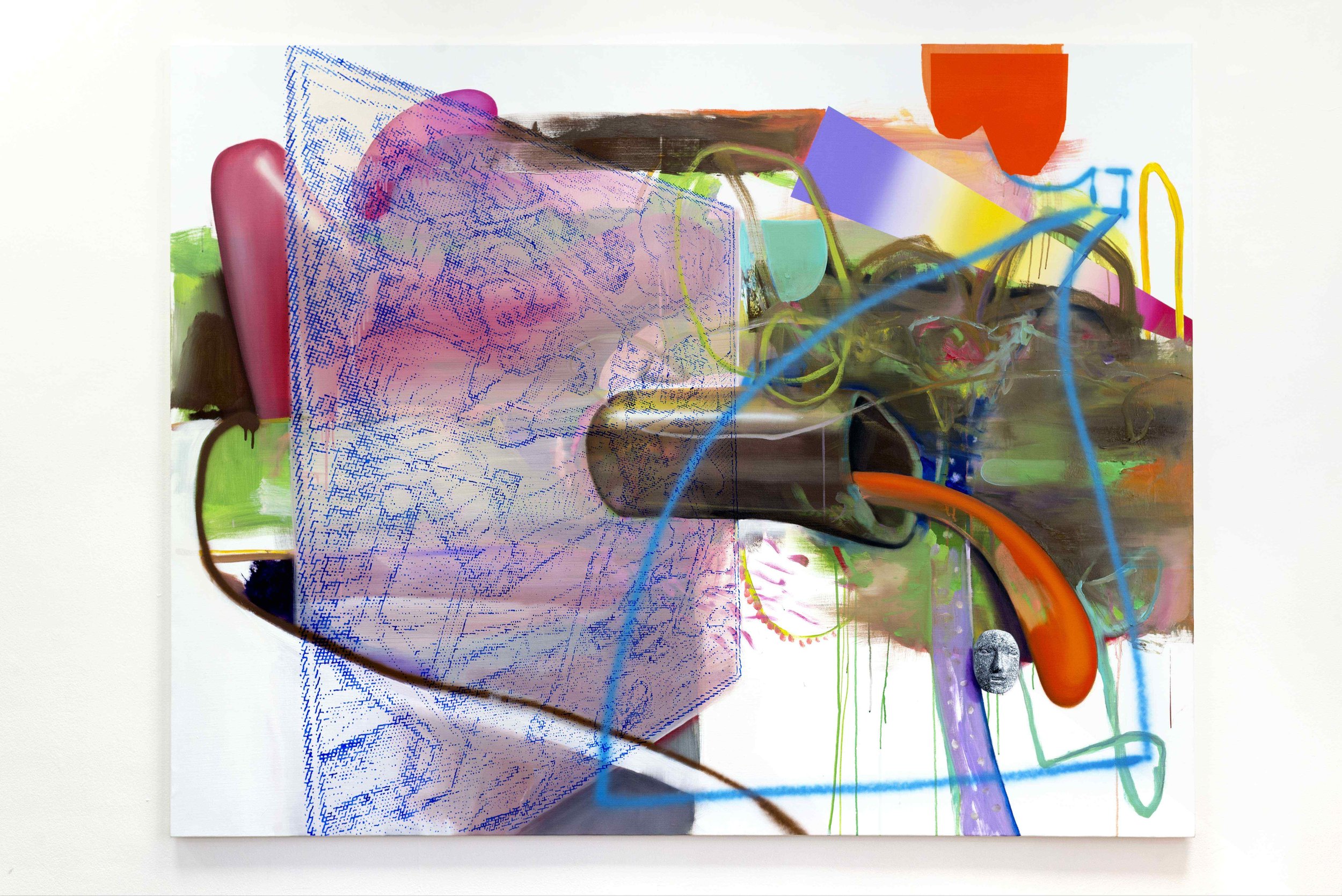bn+BRINANOVARA
Bn+BRINANOVARA recontextualise and decontextualises icons from any time to build up their imagery made up of modern art icons and references towards an antihistorical painting narrative. After proposing a mannerist approach, bn+BRINANOVARA has coherently moved to a non-figurative one, where classic figures mingle with abstract forms in an attempt to analyse Western iconographies and visual culture. The high technician of the form from which bn+BRINANOVARA takes the cue is performed by the artists till the very point of collapse, where an image becomes null and an image per se, emptied of meaning and thus purpose.
How have you come together as an artistic duo and how is it to work collectively instead of individually?
It’s funny how we’re always asked this question and we never know what to say. But you hit the nail on the head: it’s about working as a collective even if it’s just the two of us. We sort of step back from our viewpoint to share an identity.
What's the research focus you both share as a starting point for your artworks?
By the fact of working in two, we are simultaneously detached and involved in what we’re doing. In addition, we are sceptical and disillusioned by the commonplace. That’s why work only through negative processes of deconstruction, hybridisation, and substitution to generate free anarchic images. There is usually no specific starting point to share, just as there is usually an engagement with art history as a kind of world in which to act.
What is the painting after its death?
What’s painting anyway? What we know is that dead painting is specious, since it no longer speaks its language but that of the image. In fact, ‘post-painting’ is possible only in the case of a ‘post-language’ that takes its start exactly from the rediscovery of the painting’s specific one.
Western cultural visual references and mythologies enter your language and get recontextualized, if not decontextualized. What's the meaning behind this practice?
The only reasonable commitment today is to subvert what is established. It is not about being against for the sake of being against, but rather because today everything is taken for granted. Re-understanding the nature of images and the value of things is vital! And today this goes through an act of recontextualisation. No matter how old or renowned they are, some images are more effective than others in revealing the discrepancy between identity and identification. It’s the issue of non-referential images.
Through your paintings, you bring to the surface the "post-everything" condition we nowadays live in. How do you relate to this label?
It fits us well. It is tragic to some extent, but effective. What else should we do? In a ‘post-post world,’ we witness both the desire and the impossibility of being whole.
interview ILARIA SPONDA
What to read next

















